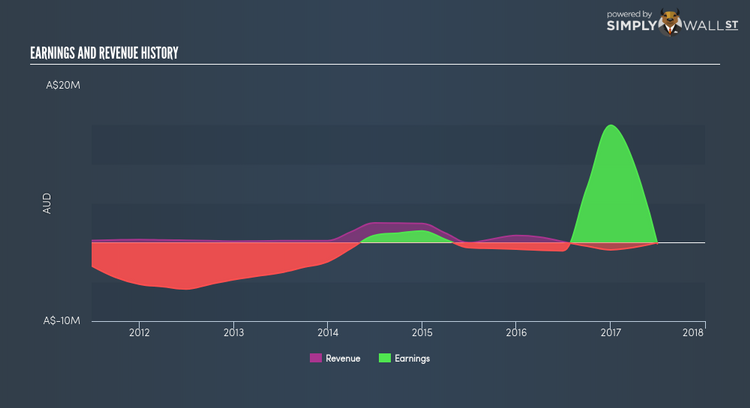One Thing To Consider Before Buying Bulletin Resources Limited (ASX:BNR)

For Bulletin Resources Limited’s (ASX:BNR) shareholders, and also potential investors in the stock, understanding how the stock’s risk and return characteristics can impact your portfolio is important. BNR is exposed to market-wide risk, which arises from investing in the stock market. This risk reflects changes in economic and political factors that affects all stocks, and is measured by its beta. Not every stock is exposed to the same level of market risk, and the market as a whole represents a beta of one. A stock with a beta greater than one is expected to exhibit higher volatility resulting from market-wide shocks compared to one with a beta below one.
Check out our latest analysis for Bulletin Resources
What does BNR’s beta value mean?
Bulletin Resources’s beta of 0.05 indicates that the company is less volatile relative to the diversified market portfolio. This means the stock is more defensive against the ups and downs of a stock market, moving by less than the entire market index in times of change. Based on this beta value, BNR appears to be a stock that an investor with a high-beta portfolio would look for to reduce risk exposure to the market.
Could BNR’s size and industry cause it to be more volatile?
BNR, with its market capitalisation of AU$6.10M, is a small-cap stock, which generally have higher beta than similar companies of larger size. Moreover, BNR’s industry, metals and mining, is considered to be cyclical, which means it is more volatile than the market over the economic cycle. As a result, we should expect a high beta for the small-cap BNR but a low beta for the metals and mining industry. This is an interesting conclusion, since both BNR’s size and industry indicates the stock should have a higher beta than it currently has. There may be a more fundamental driver which can explain this inconsistency, which we will examine below.
Is BNR’s cost structure indicative of a high beta?
An asset-heavy company tends to have a higher beta because the risk associated with running fixed assets during a downturn is highly expensive. I test BNR’s ratio of fixed assets to total assets in order to determine how high the risk is associated with this type of constraint. BNR’s fixed assets to total assets ratio of higher than 30% shows that the company uses up a big chunk of its capital on assets that are hard to scale up or down in short notice. Thus, we can expect BNR to be more volatile in the face of market movements, relative to its peers of similar size but with a lower proportion of fixed assets on their books. However, this is the opposite to what BNR’s actual beta value suggests, which is lower stock volatility relative to the market.
What this means for you:
You could benefit from lower risk during times of economic decline by holding onto BNR. Take into account your portfolio sensitivity to the market before you invest in the stock, as well as where we are in the current economic cycle. Depending on the composition of your portfolio, BNR may be a valuable stock to hold onto in order to cushion the impact of a downturn. What I have not mentioned in my article here are important company-specific fundamentals such as Bulletin Resources’s financial health and performance track record. I highly recommend you to complete your research by taking a look at the following:
1. Financial Health: Is BNR’s operations financially sustainable? Balance sheets can be hard to analyze, which is why we’ve done it for you. Check out our financial health checks here.
2. Past Track Record: Has BNR been consistently performing well irrespective of the ups and downs in the market? Go into more detail in the past performance analysis and take a look at the free visual representations of BNR’s historicals for more clarity.
3. Other High-Performing Stocks: Are there other stocks that provide better prospects with proven track records? Explore our free list of these great stocks here.
To help readers see pass the short term volatility of the financial market, we aim to bring you a long-term focused research analysis purely driven by fundamental data. Note that our analysis does not factor in the latest price sensitive company announcements.
The author is an independent contributor and at the time of publication had no position in the stocks mentioned.

